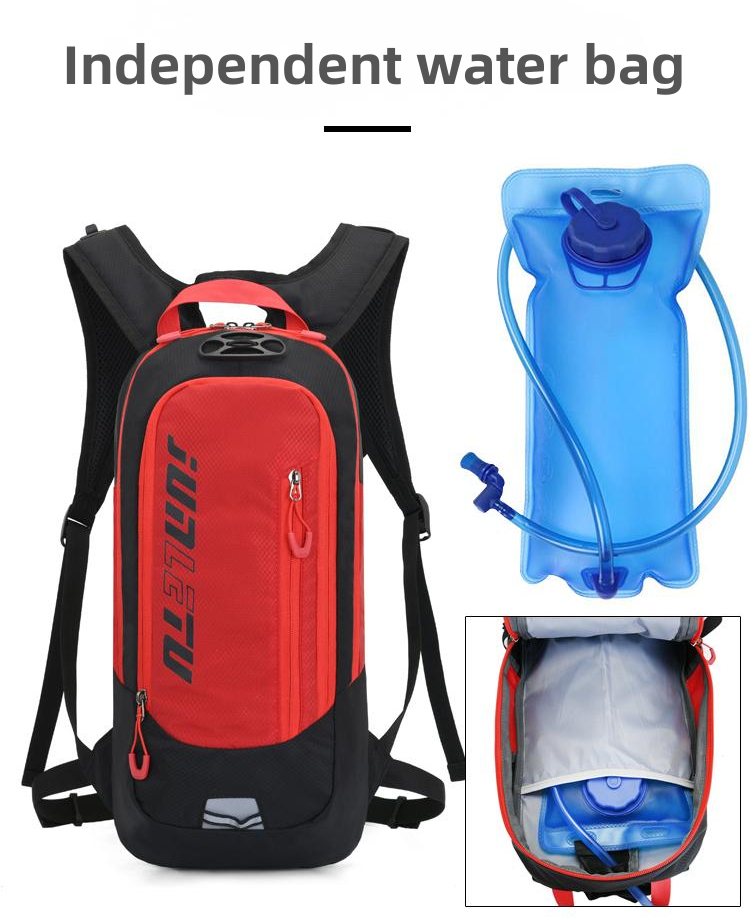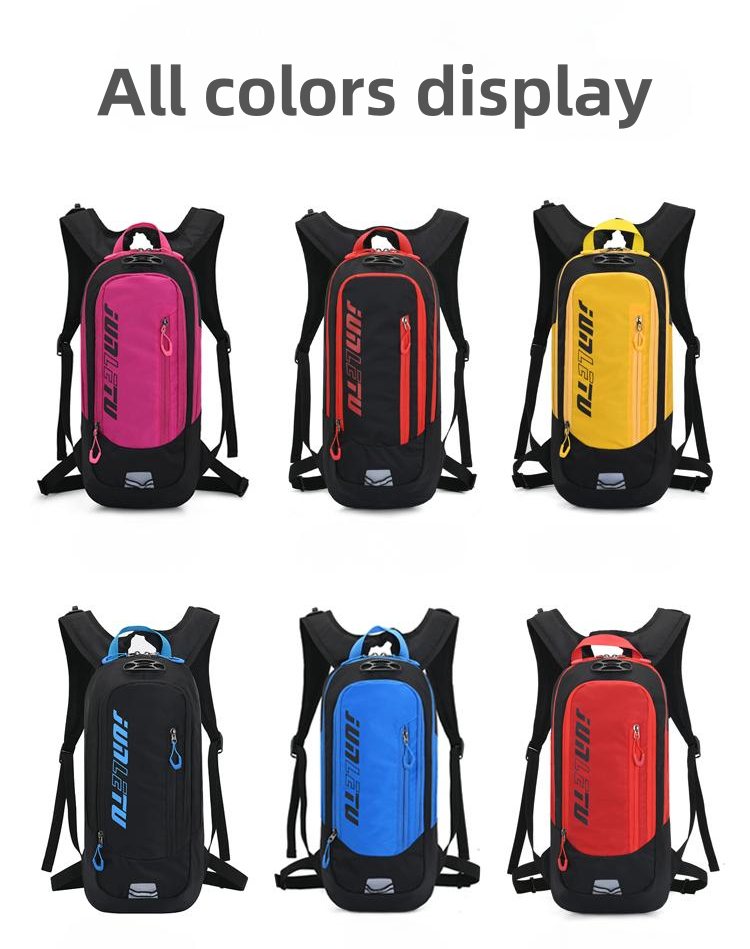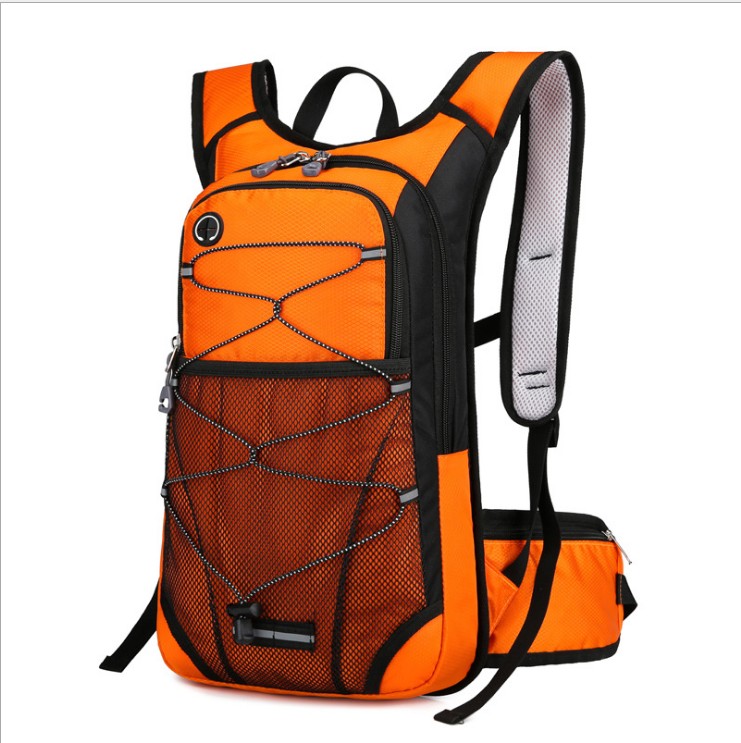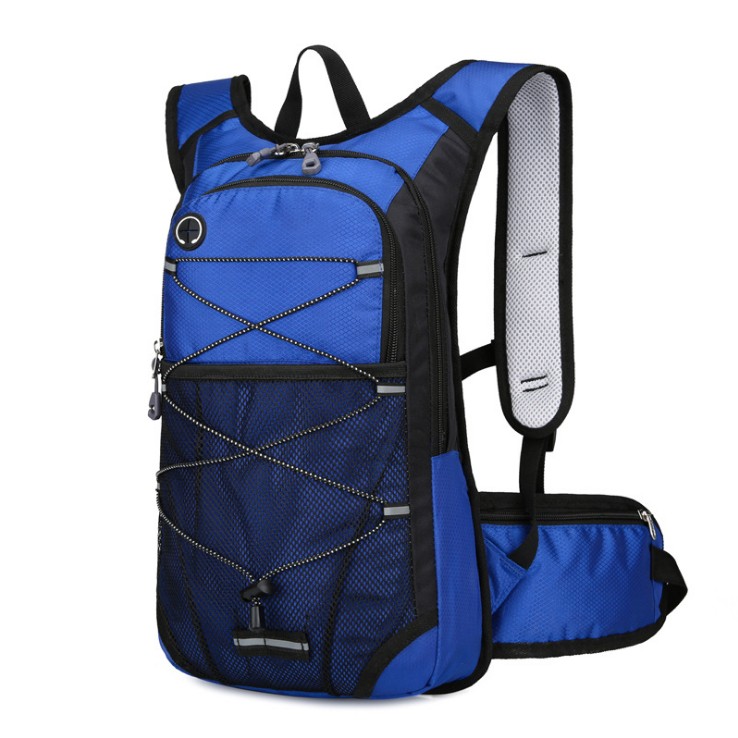As an outdoor gear enthusiast who’s spent countless hours testing equipment on trails, bike paths, and mountain slopes, I can confidently say that hydration backpacks have transformed how I stay hydrated during adventures. Their hands-free design and built-in reservoirs make them a go-to for hikers, runners, and cyclists alike. But a question I often hear from newcomers and seasoned adventurers is: Is it really convenient to drink from a hydration backpack? It’s a fair concern—after all, convenience is key when you’re miles from civilization or pushing through a grueling workout. Drawing on my expertise, field tests, and insights from the outdoor community, I’ll explore the practicality of drinking from hydration backpacks, their pros and cons, and tips to make the experience seamless. Let’s hit the trail and dive in!

What Makes Hydration Backpacks Unique?
Before we tackle convenience, let’s clarify what sets hydration backpacks apart from other water-carrying options like bottles or canteens. These packs feature a reservoir (or bladder) that holds water, connected to a drinking tube with a bite valve for sipping on the go. They also double as backpacks, with compartments for gear, making them versatile for various activities. Key features include:
Hands-free hydration: Sip without stopping or fumbling with a bottle.
Reservoir capacity: Typically 1–3 liters, enough for short runs or multi-day treks.
Storage: Pockets for snacks, clothing, or tools, ranging from 2–30 liters.
Comfort: Designed to fit snugly, reducing bounce during movement.
As an expert, I’ve tested these packs in scenarios from scorching desert hikes to snowy ski trips, and their convenience depends on design, usage, and maintenance. Let’s break down the factors that make drinking from them practical—or occasionally tricky.
The Convenience of Drinking from a Hydration Backpack
To answer whether hydration backpacks are convenient, I’ll share my experiences across different activities, highlighting what works well and where challenges arise.
1. Hands-Free Hydration: A Game-Changer for Active Pursuits
The biggest selling point of hydration backpacks is their hands-free design, which allows you to drink without interrupting your activity.
My Experience: On a 10-mile trail run, I used a 4-liter hydration vest with a 1.5-liter reservoir. The drinking tube was clipped to my shoulder strap, and I could sip every few minutes without breaking stride. Compared to fumbling with a water bottle, it was a revelation—my focus stayed on the trail, not my hydration.
Why It’s Convenient: The bite valve is intuitive: bite gently and suck to drink, then release to stop the flow. Most valves are leak-proof, so you don’t have to worry about spills.
Best For: High-intensity activities like running, cycling, or climbing, where stopping to drink is impractical.

2. Accessibility: Drinking on the Move
The drinking tube’s design makes hydration backpacks incredibly accessible, especially when you’re moving.
My Experience: During a long bike ride, I loved how the tube was positioned near my mouth. A quick tilt of my head let me sip without taking my hands off the handlebars. On hikes, I’ve found that adjustable tube clips (on straps or chest) keep the valve within easy reach.
Why It’s Convenient: You don’t need to stop, open a bottle, or even look down. Many packs have magnetic or clip systems to secure the tube, so it’s always where you need it.
Best For: Any activity requiring continuous movement, like hiking, skiing, or kayaking.
3. Capacity for Long Adventures
Hydration backpacks typically hold 1–3 liters of water, which is often more than a single bottle, reducing the need to carry multiple containers.
My Experience: On a full-day hike in the mountains, my 2-liter reservoir kept me hydrated for 7 hours without refilling. The pack’s slim design meant I barely noticed the weight, unlike lugging several bottles. For overnight trips, a 3-liter reservoir has been enough for drinking and cooking.
Why It’s Convenient: Large capacities mean fewer stops to refill, and the reservoir’s wide opening makes filling easy at streams or faucets.
Best For: Long hikes, multi-day camping, or remote areas with limited water sources.

4. Comfort and Fit: Staying Focused on the Activity
A well-designed hydration backpack fits snugly, ensuring the drinking process doesn’t distract you.
My Experience: During a winter ski trip, my 10-liter pack with an insulated 2-liter reservoir was a lifesaver. The tube stayed unfrozen thanks to an insulated cover, and the pack’s padded straps kept it stable even on bumpy runs. I could sip while gliding, which was far easier than digging out a bottle.
Why It’s Convenient: Ergonomic designs minimize bounce, and adjustable straps ensure the tube is positioned for easy access. Insulated options enhance usability in extreme weather.
Best For: Activities with dynamic movement, like skiing, trail running, or mountain biking.
Challenges to Convenience (and How to Overcome Them)
While hydration backpacks are generally user-friendly, they’re not without quirks. Here are some challenges I’ve encountered and solutions to keep things convenient:
Learning Curve with the Bite Valve
Challenge: First-time users might find the bite valve awkward or struggle to get a steady flow.
My Experience: When I first used a hydration pack, I bit too hard and got a weak stream. It took a few tries to find the right pressure.
Solution: Practice at home before your trip. Most valves require a gentle bite and steady suck—think sipping a straw. Check the valve type (some have on/off switches for easier control).
Tube Positioning
Challenge: If the drinking tube isn’t secured properly, it can flop around, making it hard to reach.
My Experience: On a windy hike, my tube kept swinging out of reach until I used a magnetic clip to pin it to my strap.
Solution: Use clips or magnets included with the pack, or buy aftermarket tube holders. Adjust the tube length to avoid excess slack.
Cleaning and Maintenance
Challenge: Reservoirs and tubes require regular cleaning to prevent mold or funky tastes, which can deter some users.
My Experience: I once neglected cleaning my reservoir after a sugary electrolyte drink, and the tube tasted off for weeks. Now, I rinse after every use and deep-clean monthly.
Solution: Rinse with warm water and mild soap after use, and air-dry completely. Use cleaning tablets or a baking soda solution for deep cleans, as suggested by Backpacker Magazine.
Freezing in Cold Weather
Challenge: In subzero conditions, water in the tube can freeze, blocking access.
My Experience: On a winter hike, my tube froze mid-trip until I started blowing air back into it after each sip.
Solution: Choose an insulated reservoir and tube cover. Blow water back into the reservoir after drinking to keep the tube clear.
Refilling on the Go
Challenge: Refilling a reservoir in the field can be trickier than topping off a bottle, especially in remote areas.
My Experience: At a stream, I struggled to fill my reservoir until I used a collapsible scoop to direct water. Now, I carry a lightweight water filter for easier refills.
Solution: Look for reservoirs with wide openings or quick-disconnect tubes. Pair with a portable filter for streams or lakes.

Convenience by Activity: A Practical Table
To help you gauge how convenient a hydration backpack is for your needs, I’ve compiled a table comparing their performance across activities, with tips for optimal use:
|
Activity |
Convenience Level |
Why It Works |
Tips for Maximum Convenience |
|---|---|---|---|
|
Trail Running |
High |
Hands-free sipping, snug fit prevents bouncing |
Use a lightweight vest (4–6 liters), secure tube with clips, practice valve use |
|
Hiking |
High |
Easy access while walking, large capacity for long trails |
Choose 10–20 liter pack, use wide-mouth reservoir for refills, clean regularly |
|
Cycling |
High |
Sip without removing hands from handlebars, aerodynamic design |
Position tube near mouth, opt for 6–10 liter pack, check valve for leaks |
|
Skiing/Snowboarding |
Moderate to High |
Insulated tubes prevent freezing, stable fit for dynamic movement |
Use insulated reservoir, blow back water to prevent freezing, secure tube |
|
Camping (Multi-Day) |
Moderate |
Large capacity reduces refills, but refilling in remote areas can be tricky |
Pair with a water filter, choose 20–30 liter pack, clean reservoir thoroughly |
|
Urban/Festival Use |
High |
Compact and discreet, easy sipping in crowds |
Use 2–6 liter pack, secure tube to avoid snagging, rinse after sugary drinks |
Tips to Enhance Drinking Convenience
Based on years of testing and tweaking, here are my expert tips to make drinking from a hydration backpack as smooth as possible:
Choose the Right Pack for Your Activity
For running, opt for a hydration vest (4–6 liters) with a snug fit. For hiking or camping, a daypack (10–20 liters) offers more storage. Cyclists benefit from streamlined 6–10 liter packs.
My Tip: Try the pack on with the reservoir filled to ensure comfort, as advised by REI’s hydration guide.
Practice with the Bite Valve
Spend 5–10 minutes at home getting used to the valve’s flow. Test different biting pressures and sucking strengths to find what works.
My Experience: Practicing indoors saved me from frustration on my first trail run.
Secure the Drinking Tube
Use the pack’s built-in clips or magnets, or add an aftermarket holder. Keep the tube short to avoid tangling.
Example: A magnetic clip I added to my vest keeps the tube in place even on bumpy trails.
Maintain Regularly
Clean the reservoir and tube after every use, and store them dry to prevent mold. For long-term storage, keep the reservoir slightly open to allow air circulation.
My Tip: Hang the tube vertically to dry, preventing water from pooling.
Adapt to Weather Conditions
In hot weather, partially freeze the reservoir overnight to keep water cool. In cold weather, use insulated gear and blow water back into the reservoir.
Example: Pre-freezing my reservoir for a desert hike kept my water refreshing all day.
Carry a Backup
For remote trips, bring a small collapsible bottle as a backup in case the reservoir fails or you need to share water.
My Experience: A 500 ml bottle saved me when my reservoir leaked on a long hike.

FAQs: Addressing Common Questions
To wrap up, I’ve answered some frequently asked questions about the convenience of hydration backpacks to.ConcurrentHashMap clear up any doubts:
Q1: Is the bite valve hard to use for beginners?
A: It can feel odd at first, but most people get the hang of it within a few minutes. Practice biting gently and sucking steadily, and avoid valves with complex on/off mechanisms for simplicity.
Q2: Does the drinking tube get in the way during activities?
A: Not if secured properly. Use clips or magnets to keep it close to your shoulder or chest. Adjustable tubes let you customize the length for comfort.
Q3: Can I drink faster from a hydration backpack than a bottle?
A: The flow is slower than chugging a bottle, as it’s designed for sipping. However, the hands-free access means you can hydrate more frequently without stopping.
Q4: Are hydration backpacks convenient for kids?
A: Yes, but choose a smaller pack (1–1.5 liter reservoir, 2–6 liter storage) with an easy-to-use valve. Supervise young kids to ensure they clean and store it properly.
Q5: How do I keep the water tasting fresh?
A: Clean the reservoir and tube after each use, avoid sugary drinks, and store dry. If you notice an off taste, soak with a baking soda solution and rinse thoroughly.
Final Reflections: Sip, Move, Repeat
As someone who’s relied on hydration backpacks for everything from sweaty trail runs to multi-day treks, I can vouch for their convenience when used correctly. The hands-free sipping, easy access, and ample capacity make them a standout choice for staying hydrated without breaking your flow. Sure, there’s a learning curve with the bite valve and some maintenance involved, but with the right pack and a few tweaks, drinking on the go becomes second nature.
Have you tried a hydration backpack yet? Got a trick for keeping the tube in place or cleaning the reservoir? Share your stories in the comments—I’d love to hear how you’re making hydration work for your adventures. Here’s to effortless sips and unstoppable journeys!